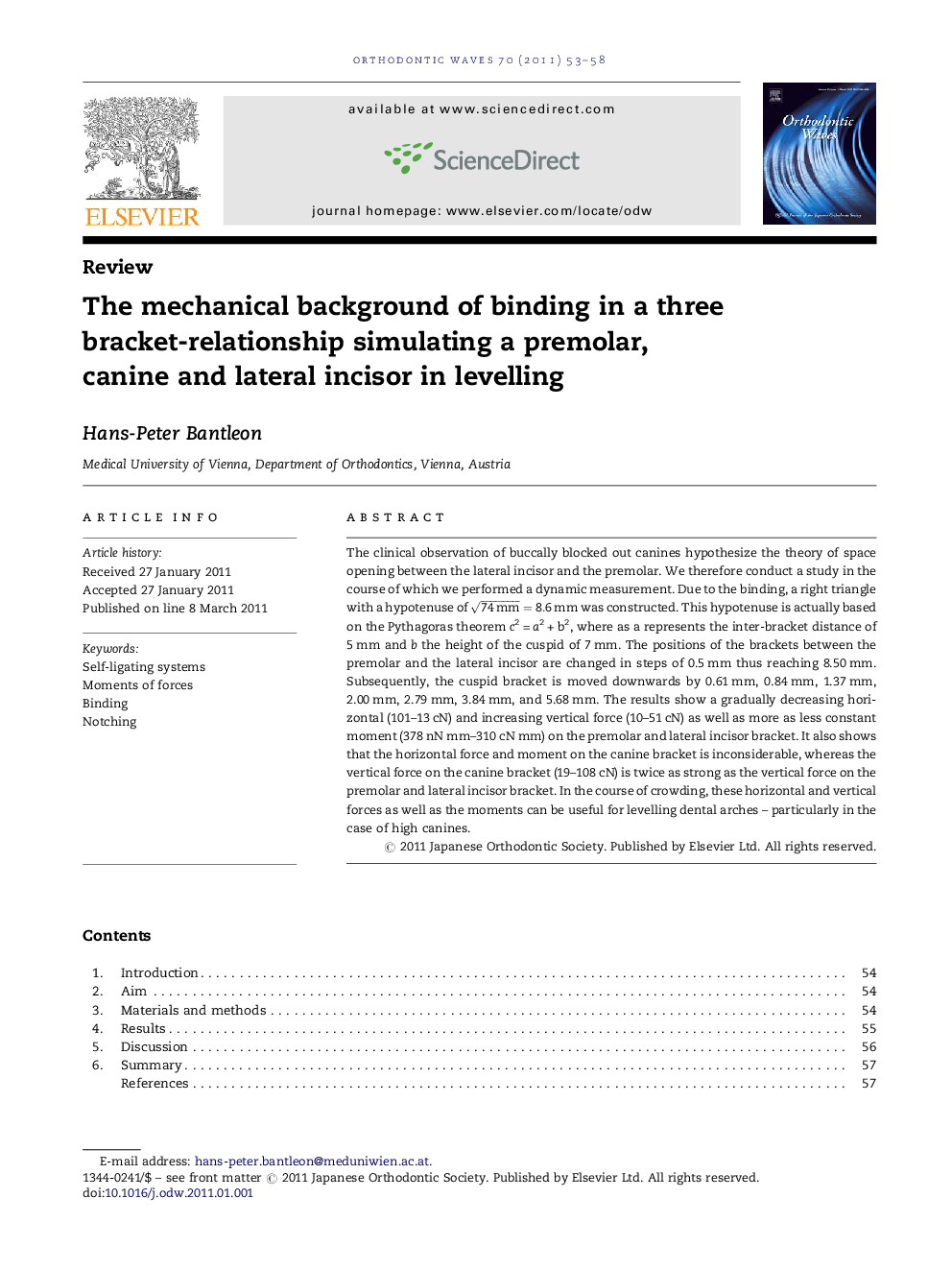| Article ID | Journal | Published Year | Pages | File Type |
|---|---|---|---|---|
| 3170540 | Orthodontic Waves | 2011 | 6 Pages |
The clinical observation of buccally blocked out canines hypothesize the theory of space opening between the lateral incisor and the premolar. We therefore conduct a study in the course of which we performed a dynamic measurement. Due to the binding, a right triangle with a hypotenuse of 74 mm=8.6 mm was constructed. This hypotenuse is actually based on the Pythagoras theorem c2 = a2 + b2, where as a represents the inter-bracket distance of 5 mm and b the height of the cuspid of 7 mm. The positions of the brackets between the premolar and the lateral incisor are changed in steps of 0.5 mm thus reaching 8.50 mm. Subsequently, the cuspid bracket is moved downwards by 0.61 mm, 0.84 mm, 1.37 mm, 2.00 mm, 2.79 mm, 3.84 mm, and 5.68 mm. The results show a gradually decreasing horizontal (101–13 cN) and increasing vertical force (10–51 cN) as well as more as less constant moment (378 nN mm–310 cN mm) on the premolar and lateral incisor bracket. It also shows that the horizontal force and moment on the canine bracket is inconsiderable, whereas the vertical force on the canine bracket (19–108 cN) is twice as strong as the vertical force on the premolar and lateral incisor bracket. In the course of crowding, these horizontal and vertical forces as well as the moments can be useful for levelling dental arches – particularly in the case of high canines.
